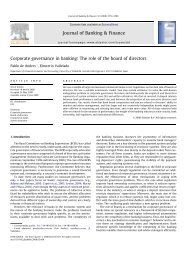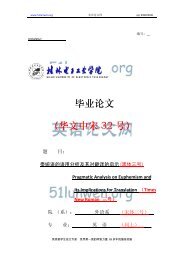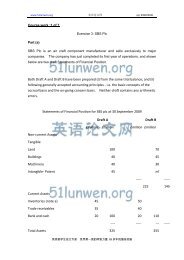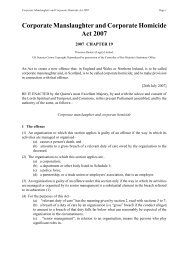GENU® Pectin
GENU® Pectin
GENU® Pectin
Create successful ePaper yourself
Turn your PDF publications into a flip-book with our unique Google optimized e-Paper software.
GENU ® <strong>Pectin</strong><br />
general introduction<br />
www.cpkelco.com
What is <strong>Pectin</strong>?<br />
Origin<br />
Plant / Fruit<br />
Chemical<br />
Carbohydrate<br />
Polysaccharide<br />
Polygalactan<br />
Functionality<br />
Gelling agent<br />
Stabilizer<br />
Thickening agent
Citrus fruits are grown for<br />
juices and oil production<br />
Peel is the waste product<br />
<strong>Pectin</strong> Raw Material<br />
All green plants<br />
Waste from food industry<br />
Rich in pectin<br />
Citrus types<br />
Citrus<br />
Apple *<br />
Sugar beet *<br />
Orange *<br />
Lime *<br />
Lemon
The Lemon Tale<br />
1 Lemon<br />
(200 g)<br />
Lemon Peel<br />
(100 g)<br />
Dried Peel<br />
(13 g)<br />
<strong>Pectin</strong><br />
(3 g)<br />
Jam<br />
(1000 g)<br />
JAM<br />
Lemon Juice<br />
(100 g) Lemon Oil<br />
Cattle Feed<br />
(10 g)
<strong>Pectin</strong> Sources<br />
Mexico<br />
Lime<br />
Florida<br />
Orange<br />
Peru<br />
Lime<br />
Argentina<br />
Lemon<br />
Brazil<br />
Orange
Apple<br />
<br />
<br />
<br />
<br />
Use of apple pomace<br />
Traditional source of pectin<br />
Historically the major part of the industry is<br />
developed from utilization of apple<br />
Gives brown pectin
Lime / lemon<br />
<br />
<br />
<br />
Today the most important source of peel<br />
High specific viscosity in aqueous solution and low calcium<br />
sensitivity<br />
High breaking strength
Orange<br />
<br />
<br />
<br />
<br />
Lower specific viscosity<br />
Higher calcium sensitivity<br />
Is less suited for traditional gel applications with calcium-rich fruit<br />
New technique can solve the problems
General <strong>Pectin</strong> Manufacturing<br />
GENU ® HM-pectin<br />
GENU ® LM-pectin<br />
Citrus peel<br />
Water<br />
Extraction<br />
Alkali<br />
Acid<br />
Filtration<br />
Residue<br />
Evaporation<br />
Alcohol<br />
Isolation<br />
Drying<br />
Alcohol recovery<br />
Deesterification<br />
Drying<br />
Milling<br />
Milling<br />
Sugar<br />
Blending<br />
Sugar<br />
Blending
Types of <strong>Pectin</strong><br />
<br />
High Methoxyl <strong>Pectin</strong> (HM)<br />
<br />
Low Methoxyl <strong>Pectin</strong><br />
Low Methoxyl Conventional (LMC)<br />
Low Methoxyl Amidated (LMA)<br />
*
Basic Structure of <strong>Pectin</strong>*<br />
Alpha (1-4) linked D-polygalacturonic acid<br />
~500 repeating units / molecules<br />
Degree of esterification (DE) = amount of acid groups that are esterified
<strong>Pectin</strong> market in China<br />
In China in 2010<br />
Juice beverage 1200-1500MT<br />
Confectionary 200-300MT<br />
Acidified milk drink 400MT<br />
Stirred yogurt 200MT<br />
Jam and yogurt fruit preparation 100MT<br />
Total 2100-2500MT<br />
Among them<br />
CPK 1240MT<br />
Danisco 500-600MT<br />
Cargill 300-400MT<br />
Others 100-200MT
<strong>Pectin</strong> types<br />
estimated world market 2009<br />
24%<br />
8% 1%<br />
67%<br />
HM<br />
LM amidated<br />
LM conventional<br />
Other
<strong>Pectin</strong> producers<br />
estimated world market share 2009<br />
18%<br />
10%<br />
20%<br />
2% 3%<br />
47%<br />
CPKelco<br />
Danisco<br />
Cargill<br />
H&F<br />
Obipectin<br />
Other













